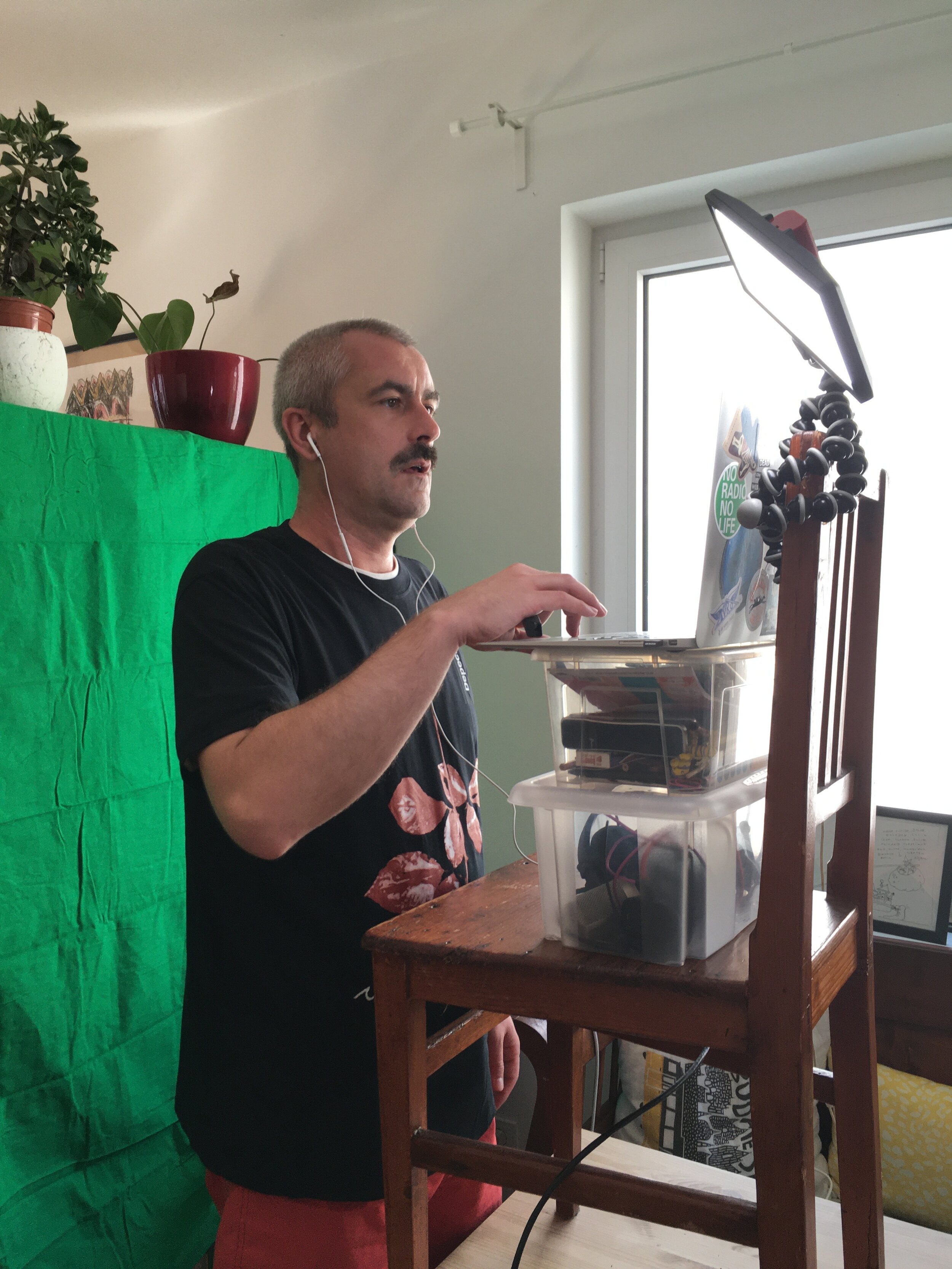Presenting and Teaching via Zoom 101
Yes, we all miss the full bandwidth of reality, but let's face it, we're left with experiencing the world via videoconferencing tools for now.
You can find dozens of videos answering specific questions related to the setup, the tools and the nitty-gritty, here I summarize what I figured -- standing on the shoulders of giants, as always. (You don't want to know how many different items and setups I tried before settling on the bare minimum.)
Rule #1: no wireless.
Wireless technology is on the brinks on dealing with this device density given the bandwidth available. If you want a reliable setup, use cables. Most importantly use an Ethernet cable to connect your computer to the router. This is the 80%.
Presenting
This is the more focused, defined format so figure the following:
camera distance: you should fit in the screen, almost fill the frame, but being able to use all your gestures,
lens height: get the lens at eye level, your nostrils are not that fun,
light: have a window near with natural light, preferably on the side, for extra fun you can add a 5600K bulb in a lamp, that bounces its light on the wall or coming at your face at an angle,
background: should be something neutral, a bookshelf is great, and Zoom's virtual background with a green screen actually runs on a 5 year old computer,
sound: generic Apple Earpods will just do fine, but getting an entry level lavalier mic would not hurt,
camera: the built-in Mac camera is okay. If you talk to a monitor, don't go further than the Logitech C920,
a presenter — hard to get a wired one.
This is the backstage. In this specific setup I used an old Joby Gorillapod to fix the Neewer LED lamp with 5600K.

This is what I looked like presenting online at Budapest Data Forum 2020.

Teaching
Different styles and methods ask for different setups, still I believe this a minimum viable approach:
real estate: more of it! You will need an extra big monitor to be able to follow the interaction, the chat, the faces, your slides and your terminal,
drawing: an 6th generation iPad with a first generation Apple Pencil as a separate Zoom user will do the trick if you want to draw on your slides or just simply use it as a whiteboard,
non-technical items: I let you figure the ones I found useful for teaching — just by looking at the photo :)

This is what I looked like live teaching via Zoom during the Summer Camp.

Postscript
Choosing the software we have to use is not always on us. Quality-wise Facetime, Bluejeans and Zoom are the descending order in our experience. Depending on your computing power you might want to give a chance to Snap Camera, especially Meeting Gestures by Cameron Hunter, or if you have a power station give a chance to mmhmm.